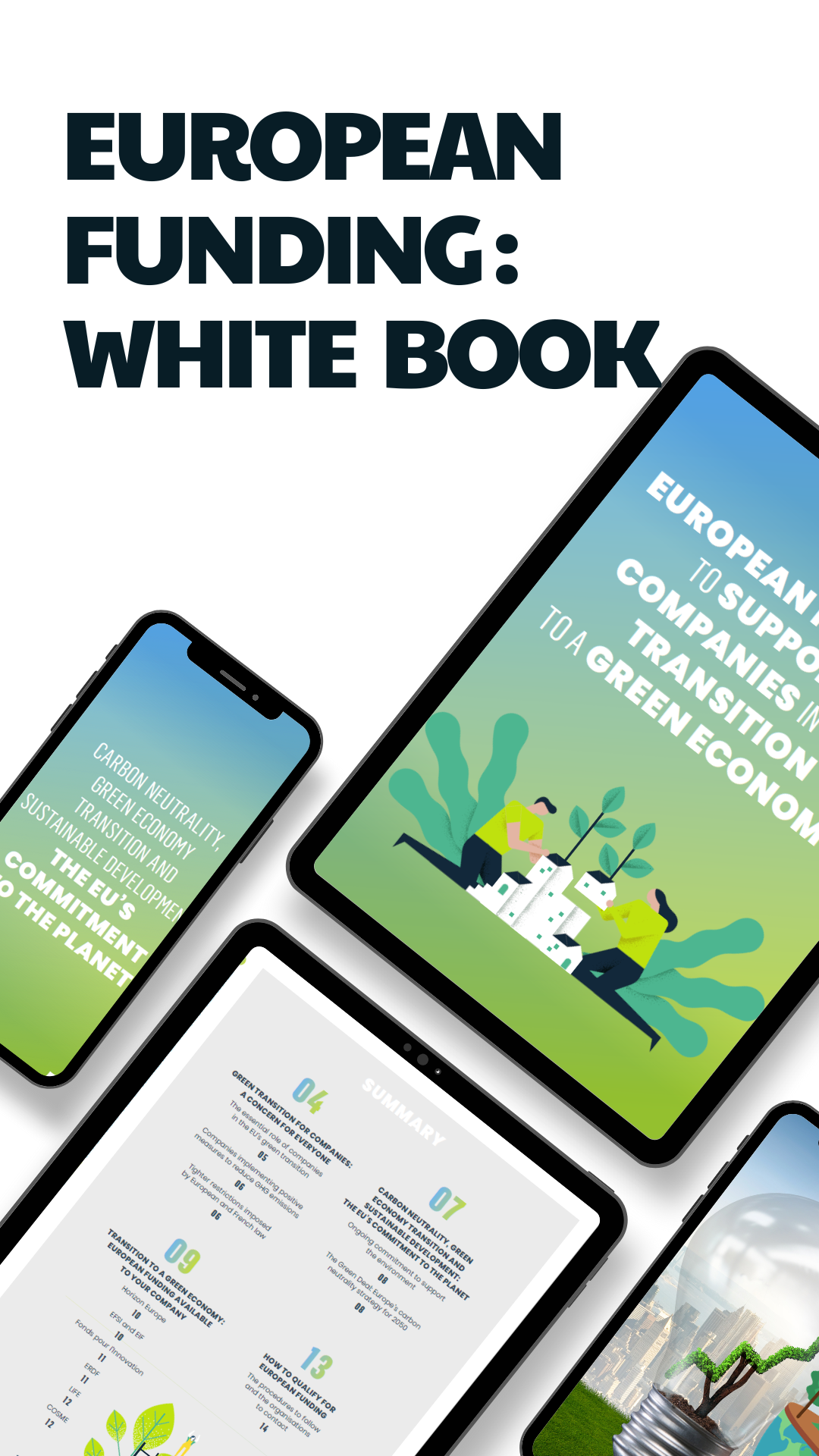The Reach regulation of 2006, provided Europe with unprecedented legislation to safeguard human health and protect the environment from the risks and hazards related to chemical substances. Europe has since launched a review as part of the Zero Pollution Action Plan and the chemical sector sustainability strategy resulting from the Green Deal.
Faced with the potential risks that chemical substances present, it is imperative to accurately identify their intrinsic properties as soon as possible, and take measures, such as elimination or restriction of those considered to be of the greatest concern. This was the legislators’ motivation in their preparation of the Reach regulations almost twenty years ago.
REACH: a regulation to make safer the use of chemical products
Upon its publication in 2006, the Reach regulation (standing for Registration, Evaluation, Authorisation and restriction of Chemicals) sought to “ensure a high level of protection of human health and the environment as well as the free movement of substances, on their own, in preparations and in articles, while enhancing competitiveness and innovation. This Regulation should also promote the development of alternative methods for the assessment of hazards of substances”. It provided for provisions relating to substances and mixtures, these provisions being “applicable to the production, the placing on the market or the use of these substances such as contained in mixtures or in articles and the placing on the market of mixtures”. And, more generally, the regulation was based on the principle of corporate responsibility: “it is for manufacturers, importers and downstream users to ensure that they manufacture, place on the market or use such substances that do not adversely affect human health or the environment”.
The provisions of Reach were filled out at the end of 2008 by the CLP (Classification, Labelling, Packaging)(1) regulation which requires the classification, labelling, and packaging of substances and mixtures in such a way as to inform about the effects of substances (e.g. sensitising of the respiratory tract, or having carcinogenic, mutagenic or toxic effects on reproduction, etc.).
The four stages of Reach
- Registration of substances: Companies must identify the risks related to the substances they produce (or import) and market, and show how they manage them. They record this information in a central database held by the European Chemicals Agency (ECHA).*
- Evaluation: The ECHA evaluates the information provided by companies to determine if a given substance poses risks (compliance check). Member States then evaluate the substances. In France, this is the responsibility of ANSES.
- Authorisation: The authorisation process aims to ensure that substances of very high concern (or “SVHC”) are “progressively replaced by less hazardous substances or technologies when technically and economically viable alternatives exist”. As at 21 January 2025, the SVHC list contains 247 entries.
- Restrictions: There is a restrictions process “for certain substances of very high concern where they pose an unacceptable risk to health or to the environment.” These substances may be restricted, or even banned if necessary.”
*The ECHA plays a central role within the Reach system, as it manages the databases necessary for the system’s operation, coordinates the thorough evaluation of the information provided on chemical products, and manages a public database on which professionals and consumers can find information on hazards.
A “Chemicals Strategy” in 2020
Pollution is the main environmental cause of multiple diseases and premature deaths, and one of the major causes of biodiversity loss.
The Green Deal adopted at the end of 2019 aims to make Europe carbon neutral by 2050, but also sets the objective of moving towards zero pollution in the air, water, and soil.
Published a few months later (October 2020), the Chemicals Strategy for Sustainability aligns with this ambition: it aims both to better protect people and the environment, and to stimulate innovation for safe and sustainable chemicals. A number of actions are proposed for this, such as removing the most dangerous substances from consumer products, considering the cocktail effect (related to mixtures) during risk assessment, facilitating European resilience in supply and sustainability of chemical products, and having the EU play a global leadership role by upholding high standards and not exporting chemicals that are banned within the Union.
Reach under review
The revision of Reach is also one of the actions planned by this “Chemicals Strategy”. The aim is to bring European rules on chemicals into line with the Zero Pollution by 2050 target, as set out in the “Towards zero pollution in air, water, and soil” Action Plan adopted in May 2021.
Enacted in 2007, Reach has evolved in line with advancement of knowledge around chemicals and their properties. Alongside this, its processes can be somewhat slow, primarily because the data companies provide can be limited, outdated, or even missing altogether from the records. This necessitates asking for additional information, so delaying risk assessment and decision-making (authorisation or otherwise of the product, requesting that safer substances be marketed etc.).
All of this, coupled with SMEs’ reluctance to embark on a lengthy and costly process, led the Commission in 2022 to start the revision process for the regulation.
The revision process includes in-depth evaluation of the impacts that may result from any possible changes to it on the protection of human health and the environment, and on the use of animal testing. More broadly, it also takes into account functioning of the internal market and the issues of competitiveness and innovation among European industry and businesses.
For the Commission, the impact assessment and proposed revision must “be underpinned by existing reviews and studies, and by several new studies that will assess strategic options and impacts.” The process provides for consultations with the various stakeholders to ensure that all viewpoints, as well as any ad hoc information, are taken into account. The public consultation launched in 2022 aimed to address several key points such as the revision of registration requirements (higher information requirements, obligation to register polymers as constituent elements of plastics); the introduction of evaluation factors for mixtures; the simplification of communication in supply chains; the revision of provisions related to the evaluation of dossiers and substances; the reform of authorisation and restriction processes (including the extension of generic approaches to risk management and the introduction of the concept of essential use), as well as the revision of provisions relating to control and enforcement. Other interactions were also organised: targeted stakeholder consultations with selected groups; expert workshops and policy workshops; consultation with the “Competent Authorities for REACH and CLP” expert group, etc.
What changes can we hope for?
While the CLP regulation revision was published in the OJEU on 20 November 2024*, as at the beginning of February 2025 the Reach revision of Reach remains very much a work in progress. Today however the so far failed attempts at simplification would indicate possible obstacles, or even a halt to the anticipated developments. Some in fact (political parties, ministers or others), primarily interested in the short term, are calling for limitations, a postponement, or even suspension of the Green Deal. The Boussole [Compass] competitiveness initiative launched on 30 January by the Commission to “regain competitiveness and ensure sustainable prosperity” also places simplification at the forefront of its major catalysts. As part of this, the “omnibus” law(2) expected on 26 February, which should focus mainly on sustainability information (CSRD), due diligence (CSDDD, or CS3D), and taxonomy, has been announced as the first in a long list…
The ECHA in overview
Since 2007, ECHA has been working to make safer the use of chemical products and oversees the implementation of EU legislation on these substances: REACH, CLP, Biocidal Products regulations, and the regulation relating to Prior Informed Consent (“PIC Regulation”). Bisphenols, glyphosate, microplastics, endocrine disruptors, PFAS, phthalates, and lead, as well as tattoo inks and permanent make-up, skin sensitising chemicals, and cancer prevention form part of its current main areas of work.
1) In this regard, Inéris offers an interesting insight into the changes introduced
2) An “omnibus” law is a measure that can amend several other regulations by combining multiple topics.




